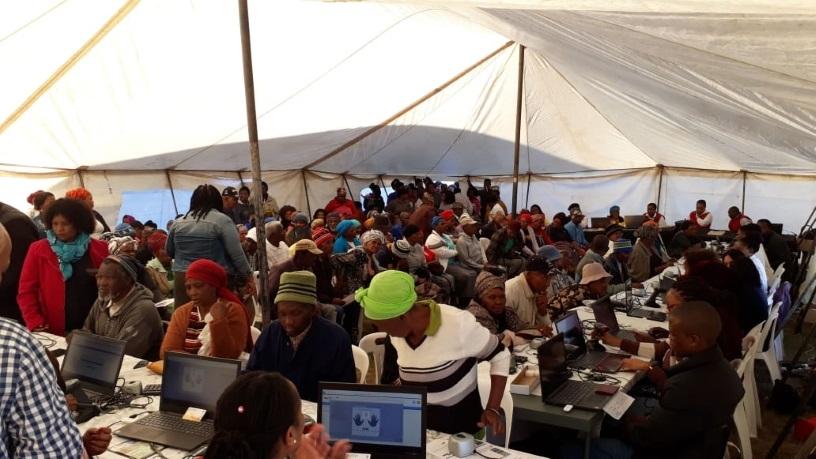
The South African Post Office (SAPO) has deployed the services of a locally-based biometrics firm to ensure officials distribute payments to the rightful social grant recipients.
Fides Cloud Technologies, in partnership with Magix Africa, is providing multi-modal authentication software to biometrically verify SA Social Security Agency (SASSA) beneficiaries at 4 500 SAPO branches.
The Magix Africa consortium confirmed it has been awarded the SAPO biometrics contract for a five-year period. The company, however, said it can't disclose the value of the deal. Following a pilot phase across 12 sites, the biometrics system went live during the May payment cycle.
While the national postal services makes moves in maintaining biometric verification systems, fears about the lack of money for cash SASSA payments have surfaced.
According to reports, Cash Paymaster Services (CPS) has indicated it does not have enough money to pay social grants in June. CPS reportedly claims SASSA has not paid for its service to pay social grants in cash.
Even though SAPO is the entity officially mandated to manage payment of social grants, CPS still assists with payment support to 2.8 million beneficiaries at cash pay points.
New player in town
The management and verification of social grant recipients' identification has been at the hands of CPS and internal SASSA biometrics systems.
As the company originally contracted to distribute 10.8 million welfare payments, SASSA relied on CPS to have biometric systems in the payment of beneficiaries through cash payments, direct deposits and electronic payments.
With Fides and Magix Africa, SAPO is looking to maintain biometrics standards that will prevent data fraud.
Hedley Hurwitz, MD of Fides Cloud Technologies, explains that Magix Africa is in charge of managing the project with the post office, while his company takes on delivery of the multi-modal biometric verification system.
"We do biometric authentication of grant recipients. There is a lot of money involved and in order to make sure for the public, SASSA and SAPO that the funds are reaching the right individual, there has to be very robust mechanisms to ensure that. Biometrics in combination with the home affairs national ID system makes sure money is going to the right person."
Kevin Wotshela, MD of Magix Africa, adds: "What is exciting for me is that you have an IP solution developed locally that could be given to a high-powered project like the SAPO one. A local company is offering innovative solutions to a government entity that is trying to make a difference in people's lives. The technology evolves every day."
Getting it right
Both SAPO and the social security agency previously stressed the role of biometrics as key to getting the social grants payments process right.
In the past, SASSA promised to improve its own internal biometric payment system to curb unauthorised deductions from the accounts of already cash-strapped recipients.
In February, Herman Kotze, CEO of Net1, told ITWeb that SAPO needed clear systems in place to issue cards to beneficiaries, as well as assert how it will maintain the integrity of the biometrics verification systems.
Net1 previously stated it saves the South African government R2 billion per annum through the identification and removal of fraudulent beneficiaries.
SAPO's decision to employ the services of the locally-based authentication system can be seen as a message to detractors that the national postal service is serious about safeguarding social grant recipients' data.
Hurwitz agrees that biometrics is a complex part of technology as it depends very much on operational factors.
It's not just technology on its own, it depends on the right adoption, he notes. "Biometrics has to be a strong focus in a business. It's a fast-moving industry and you have to make sure you are using the latest and greatest technologies."
He explains that in protecting beneficiaries' data, Fides' authentication platform seeks to make sure officials are dealing with the right individual. "It does this through a number of identity providers and everything is contained in a key concept known as a digital vault. Fides provides the vault capability to deal with all identity artefacts relating to an individual or a legal entity. So if you look at the identity artefacts that relate to you, like a photo, fingerprints or credit record at a bureau, these are things that will point towards making certain it is you and less certain if it's not."
Meanwhile, it is not clear whether SAPO will use the other means of verification that come with the Fides system, but the option to use palm print and facial recognition is possible.
"They [SAPO] have purchased the multi-modal solution but for this phase they have elected to go with fingerprints but they did go to great lengths in the adjudication process to make sure we could support the other modalities," Hurwitz concludes.
Share